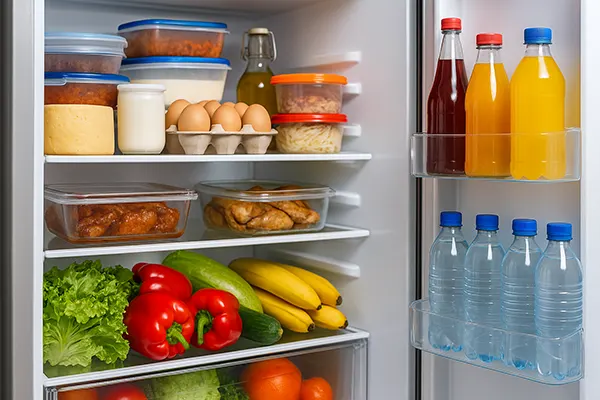
How to Store Food Safely in the Fridge: The Home Food Safety System
Proper food storage in the refrigerator is crucial not only for preserving freshness and taste, but also for preventing foodborne illnesses. In recent years, food safety standards have become more stringent, and households are increasingly adopting structured systems to manage what they store and how. A well-maintained fridge with a clear strategy can significantly reduce waste and protect your health.
Understanding Optimal Storage Temperatures
One of the foundational elements of any home food safety system is temperature control. The UK’s Food Standards Agency (FSA) recommends that refrigerators be kept at 5°C or below to slow bacterial growth. Temperatures above this threshold accelerate spoilage, especially for perishable items such as meat, dairy, and leftovers.
Using a fridge thermometer helps ensure the environment remains consistent. Fridge temperature can fluctuate depending on how often the door is opened or how full the appliance is. Keeping a thermometer on the middle shelf allows for accurate monitoring without relying solely on built-in displays, which may be inaccurate.
It’s also essential to be aware of the different temperature zones within the fridge. The coldest area is typically the back of the bottom shelf, suitable for raw meat and fish. The top shelves and doors are usually warmer and better for items like sauces or drinks.
Placement Strategy Inside the Fridge
Organising your fridge with purpose is not just about space—it’s about safety. Raw meat should always be stored on the bottom shelf in sealed containers to prevent cross-contamination with other foods. Ready-to-eat items like dairy products, leftovers, and cooked meats should go on higher shelves to minimise exposure to raw juices.
The middle shelf is ideal for eggs, dairy, and prepared meals. Fruits and vegetables should be stored in the designated salad drawer at the bottom, separate from raw protein sources. Avoid placing perishable items in the fridge door, as it’s the warmest area due to frequent opening and closing.
Implementing clear labelling and rotating food (first in, first out) will also help track expiry dates and reduce waste. Clear containers make it easier to see what’s inside and identify what needs to be used first.
Preventing Bacterial Contamination
Preventing the spread of harmful bacteria like Listeria, E. coli, and Salmonella is a key priority in any home food storage plan. These pathogens thrive when food is stored improperly, especially at incorrect temperatures or in unclean environments.
One common mistake is failing to cool leftovers quickly. It is advisable to cool hot food within 90 minutes and store it in shallow containers before placing it in the fridge. This rapid cooling reduces the risk of bacterial growth. Additionally, avoid overpacking the fridge, as this restricts airflow and results in uneven cooling.
Regularly cleaning your fridge with warm soapy water—and not harsh chemicals—is another essential step. Spills should be cleaned up immediately, and shelves should be wiped down weekly. This routine helps prevent bacterial build-up and foul odours.
Best Practices for Handling Leftovers
Leftovers should be stored in airtight containers and clearly labelled with the date of preparation. In general, they should be consumed within 2-3 days, depending on the type of food. High-risk items like cooked rice and poultry should be eaten sooner to avoid bacterial risk.
It’s important to never reheat leftovers more than once, as this increases the risk of food poisoning. When reheating, ensure the food is steaming hot all the way through. Avoid relying on microwave heating alone unless the container is stirred or rotated halfway through the process.
When in doubt, throw it out. If food smells unusual or has changed in texture or colour, it’s safer not to eat it. Being cautious is far better than risking foodborne illness.

Implementing a Home Food Safety System
Developing a personal food safety system is about creating consistent habits. Start by setting a weekly schedule for checking expiry dates and cleaning shelves. This routine ensures that spoiled or expired items are regularly removed and storage areas stay clean.
Use a dry-erase board or a digital app to track the contents of your fridge, especially items with short shelf lives. Labelling and categorising food groups into designated zones in your fridge is a great way to avoid mix-ups and encourage efficient use of space.
Regularly review food consumption patterns in your household. By monitoring what gets used and what goes to waste, you can adjust shopping habits and storage methods. It’s also useful to schedule a “use-it-up” day each week to consume food nearing expiry.
How Technology Can Help
Smart fridges and mobile apps are now available to assist with home food safety. Some models feature built-in cameras that allow you to see inside your fridge remotely, helping reduce food waste and improve planning when shopping.
Other apps enable barcode scanning to track expiry dates and set reminders before items go bad. These tools can significantly enhance organisation and provide peace of mind for busy households, especially those managing food allergies or dietary needs.
For those who prefer a simpler approach, printable fridge inventory sheets can also serve as an effective tracking method. The goal is to maintain visibility and order without overcomplicating the process.
